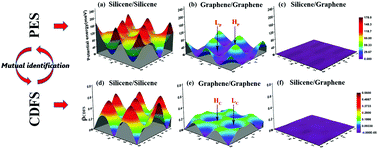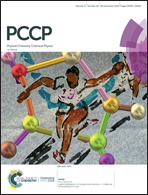First-principles theory of atomic-scale friction explored by an intuitive charge density fluctuation surface†
Abstract
Atomic-scale friction theory, and even superlubricity, is inseparable from charge redistribution, but lacks a bridge to establish the potential link between them. Here, we first report a quantized charge density fluctuation surface (CDFS) by assembling silicene/graphene and germanene/graphene heterostructures and their corresponding homogeneous bilayers for DFT calculations. By observing the PES morphology, we see that it exhibits a decrease in friction by more than two orders of magnitude. A crucial physical quantity controlling the friction was found to be the charge density fluctuation during the friction process via analyzing the CDFSs. Such CDFS holds a universal applicability in van der Waals materials, and is recommended to explore the friction cooperating with PES. This will be a new idea for exploring whether friction is related to electrical properties by defining the conversion factor K for a wide series of interactions, including metallic, covalent, and van der Waals bonding. In particular, the same conversion factor K exists for van der Waals bonding, and a mutual identification between the CDFS and PES can be achieved.



 Please wait while we load your content...
Please wait while we load your content...